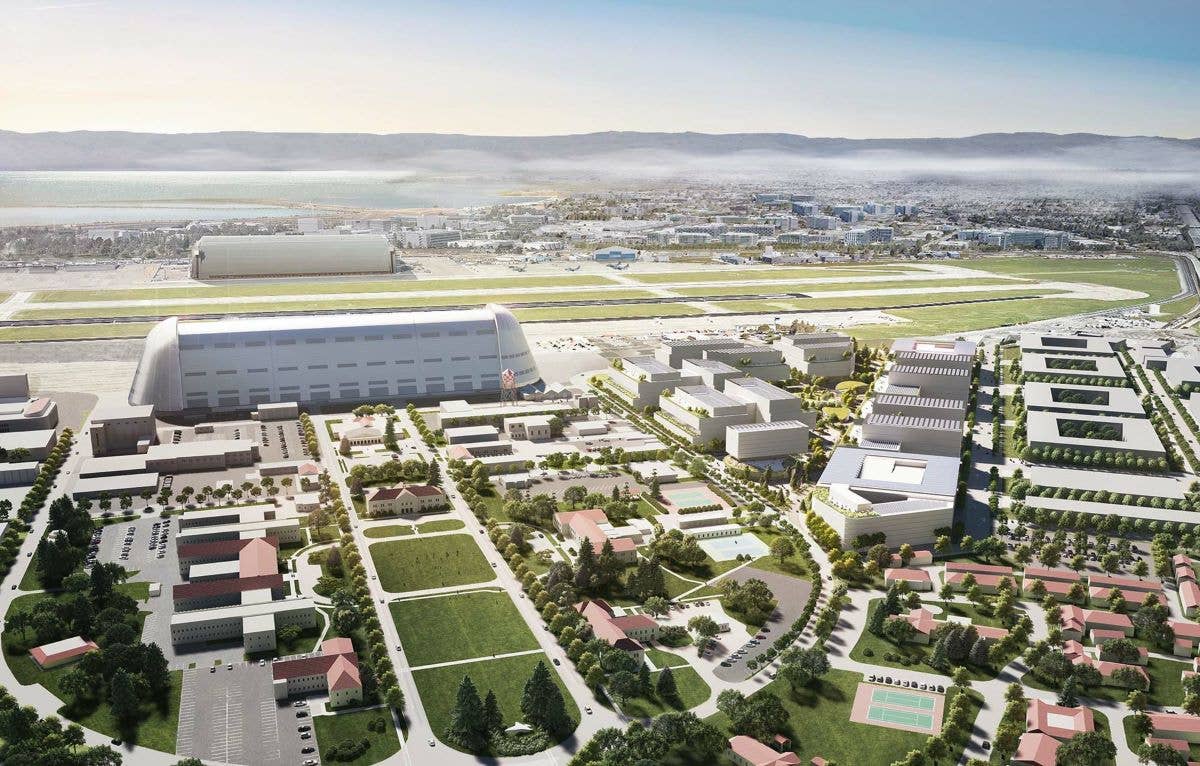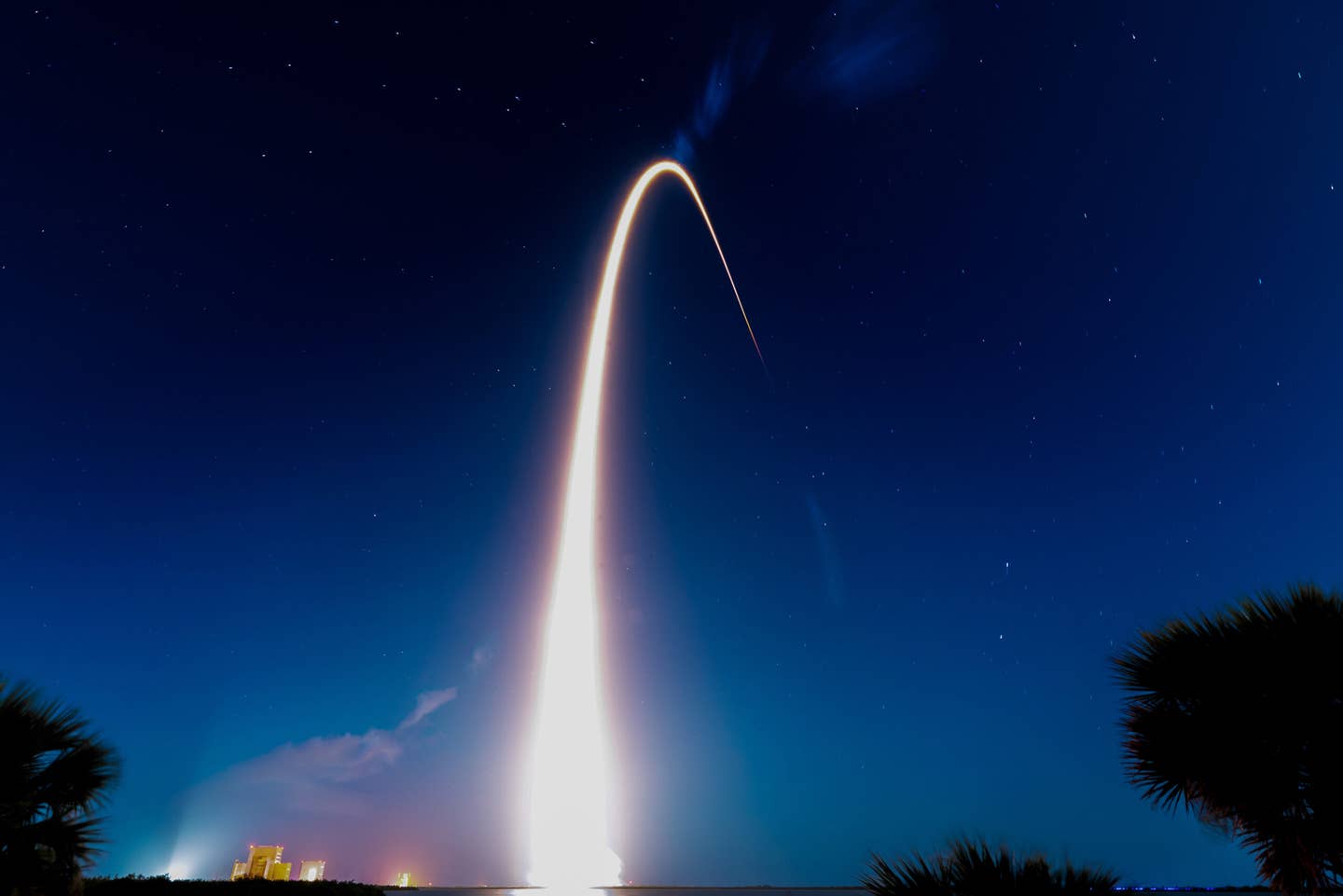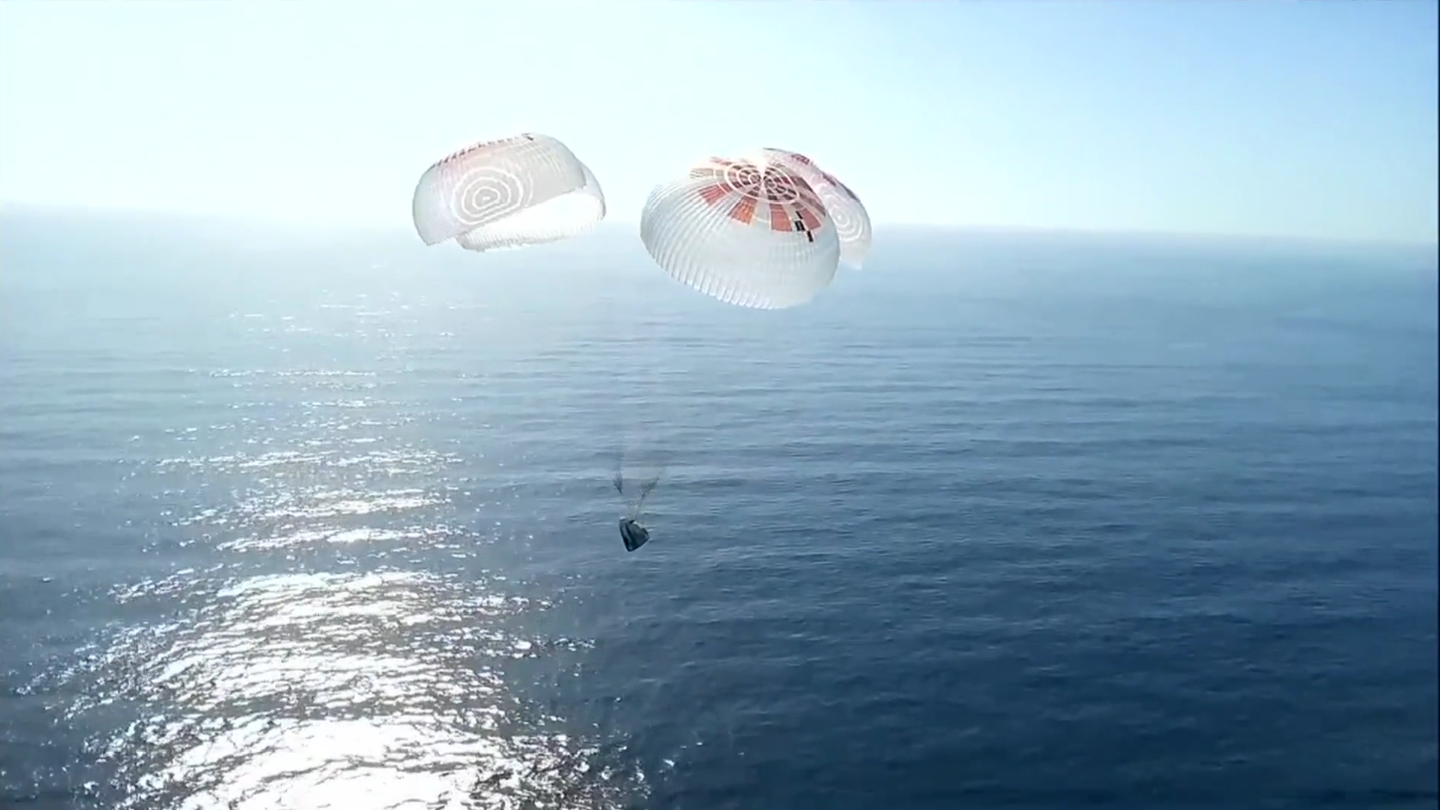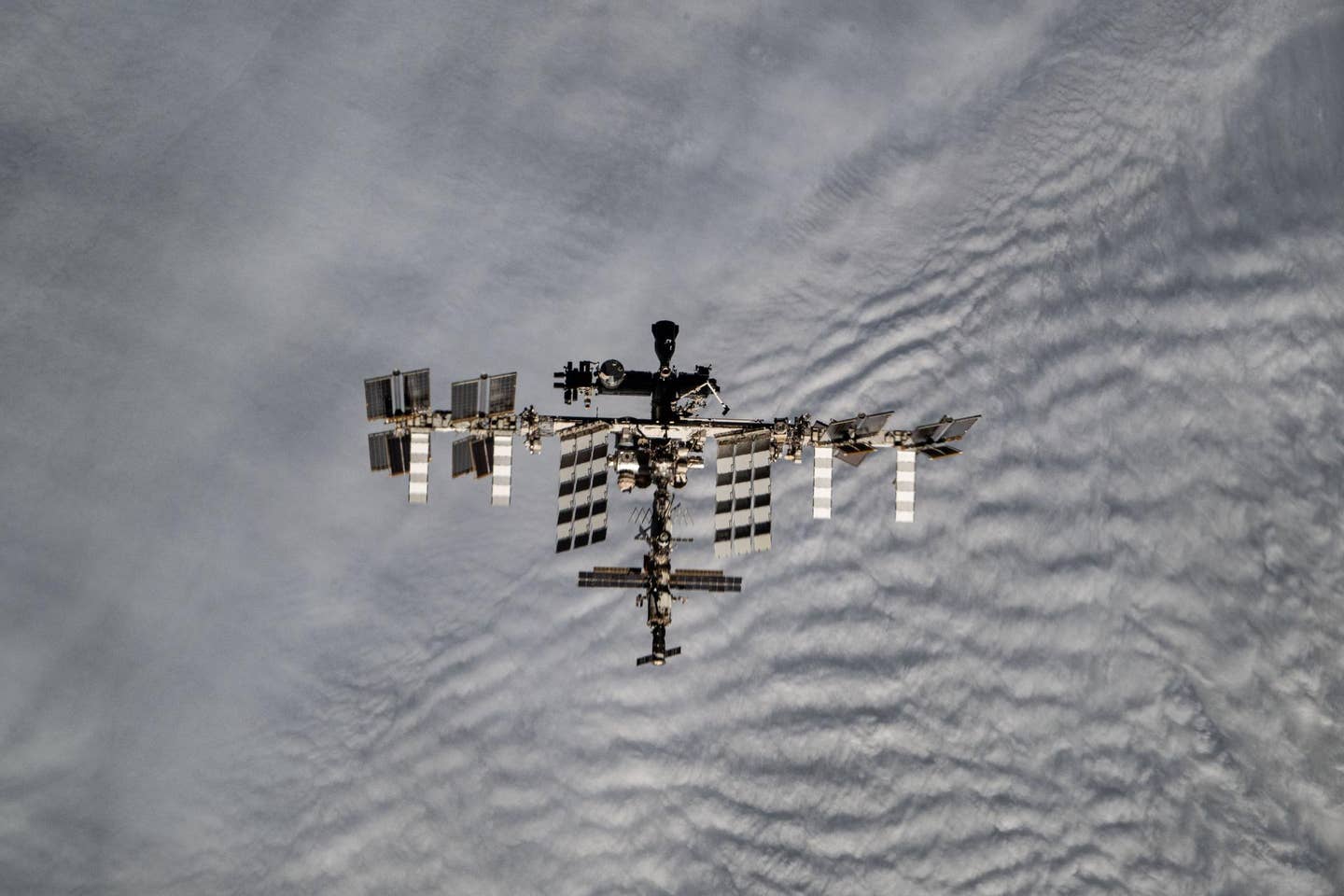Plans for Berkeley Space Center Unveiled for NASA Ames
The new 36-acre innovation hub will accommodate up to 1.4 million square feet of research space, the University of California at Berkeley said.

Artist’s rendering of NASA’s Ames Research Center and Moffett Federal Airfield in Mountain View, California, shows the future location of the Berkeley Space Center (gray buildings stretching from center to right). The center will be an innovation hub encouraging collaborations among University of California at Berkeley faculty and students, private companies, NASA scientists and engineers, and Silicon Valley’s tech industry. NASA Ames’ iconic Hangar One, which once housed airships, is at left. [Courtesy: University of California at Berkeley]
NASA and University of California at Berkeley announced Monday they are teaming up for a new aviation and space innovation hub located at the space agency's research campus in Silicon Valley.
Once completed, the 36-acre Berkeley Space Center will be able to accommodate up to 1.4 million square feet of research space located at NASA Ames Research Center and Moffett Federal Airfield (KNUQ) in Mountain View, California.
The complex is expected to cost $2 billion to build, The Mercury News reported.
For decades, NASA has focused on developing land acquired after Naval Air Station Moffett Field was decommissioned in 1994. Since its launch in 2002, NASA Research Center has become home to 25 companies, including Google, UC-Berkeley said.
The new buildings will house state-of-the-art research and development laboratories for companies and UC-Berkeley researchers, as well as classrooms—all of which will provide an immersive experience for students, according to the university.
"We're hoping to create an ecosystem where Berkeley talent can collaborate with the private sector and co-locate their research and development teams,” Alex Bayen, a UC-Berkeley electrical engineering and computer sciences professor and associate provost for Moffett Field program development. “And since we will be close to NASA talent and technology in the heart of Silicon Valley, we hope to leverage that to form future partnerships."
The facility will build upon an existing partnership between the space agency and university, which NASA said could lead to "potential mutually beneficial learning opportunities."
“[That includes] accelerating local and national capabilities for transporting cargo and passengers using emerging automation and electric propulsion technologies; examining how biomanufacturing can enable deep space exploration; and leveraging NASA’s high-performance computing assets," NASA said. "The new campus aims to bring together researchers from the private sector, academia, and the government to tackle the complex scientific, technological, and societal issues facing our world."
According to Ames Research Center director Eugene Tu, UC-Berkeley's research and capabilities could "be a significant addition" to the work already underway there, starting with the proximity to undergraduate and graduate-level students.
"The NASA mission is twofold: inspiring the next generation of explorers, and dissemination of our technologies and our research for public benefit," Tu said. "Collaboration between NASA and university researchers fits within that mission."

Sign-up for newsletters & special offers!
Get the latest FLYING stories & special offers delivered directly to your inbox






